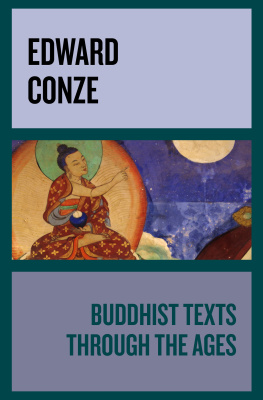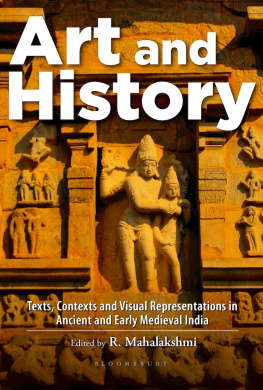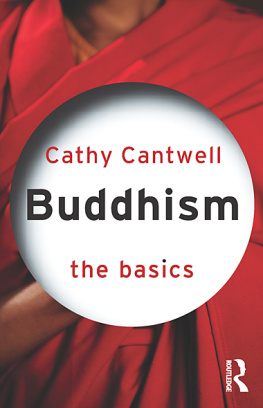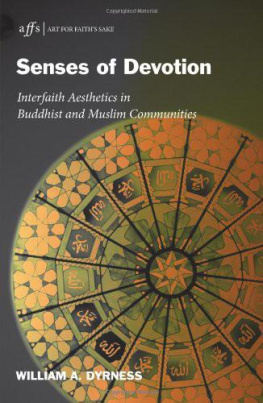Imaging Wisdom
ROUTLEDGE CRITICAL STUDIES IN BUDDHISM
General Editors
Charles S. Prebish
Pennsylvania State University
Damien Keown
Goldsmiths College, University of London
The Routledge Critical Studies in Buddhism Series is a comprehensive study of the Buddhist tradition. The series explores this complex and extensive tradition from a variety of perspectives, using a range of different methodologies.
The Series is diverse in its focus, including historical studies, textual translations and commentaries, sociological investigations, bibliographic studies, and considerations of religious practice as an expression of Buddhism's integral religiosity. It also presents materials on modern intellectual historical studies, including the role of Buddhist thought and scholarship in a contemporary, critical context and in the light of current social issues. The series is expansive and imaginative in scope, spanning more than two and a half millennia of Buddhist history. It is receptive to all research works that inform and advance our knowledge and understanding of the Buddhist tradition. The series maintains the highest standards of scholarship and promotes the application of innovative methodologies and research methods.
THE REFLEXIVE NATURE OF AWARENESS
A Tibetan Madhyamaka Defence
Paul Williams
BUDDHISM AND HUMAN RIGHTS
Edited by Damien Keown, Charles Prebish, Wayne Husted
ALTRUISM AND REALITY
Studies in the Philosophy of the Bodhicaryvatra
Paul Williams
W IN THE FOOTSTEPS OF THE BUDDHA Kathryn R. Blackstone
THE RESONANCE OF EMPTINESS
A Buddhist Inspiration for Contemporary Psychotherapy
Gay Watson
THE SOUND OF LIBERATING TRUTH
Buddhist-Christian Dialogues in Honor of Frederick J. Streng
Edited by Paul O. Ingram and Sallie B. King
AMERICAN BUDDHISM
Methods and Findings in Recent Scholarship
Edited by Duncan Ryuken Williams and Christopher Queen
Imaging Wisdom
Seeing and Knowing
in the Art of Indian Buddhism
Jacob N. Kinnard
First published in 1999
by Routledge
2 Park Square, Milton Park, Abingdon, Oxon, OX14 4RN
711 Third Avenue, New York, NY 10017
1999 Jacob N. Kinnard
All rights reserved. No part of this book may be reprinted or
reproduced or utilised in any form or by any electronic,
mechanical, or other means, now known or hereafter
invented, including photocopying and recording, or in any
information storage or retrieval system, without permission in
writing from the publishers.
British Library Cataloguing in Publication Data
A catalogue record for this book is available from the British Library
Library of Congress in Publication Data
A catalogue record for this book has been requested
ISBN 0700710833
Publisher's Note
The publisher has gone to great lengths to ensure the quality of this reprint
but points out that some imperfections in the original may be apparent.
For Isabelle and Gideon
Contents
Imagining Images
Present Presence, Present Absence
Imaging and Imagining the Buddha
The Image of Wisdom
Representing Prajprmit
The Book is the Thing
Seeing and Knowing
Acknowledgments
A great many individuals assisted me during the research and writing of this book, and to all of them I owe my deepest gratitude. First, however, I would like to thank the Mellon Foundation for awarding me a postdoctoral fellowship that allowed me to complete this book, and also my colleagues at Northwestern University for creating an ideal environment in which to work.
While doing research in India, I was assisted by the Archeological Survey of India, which granted me permission to study and photograph at many sites under their care. The American Institute of Indian Studies Center for Art and Archaeology, in Varanasi, also provided me with advice and access to their large photo archive, and I am grateful to all of the officials of the A.I.I.S. for granting me permission to reproduce a number of images in their collection. Mr. R. Sharma, the Archivist, was especially helpful. Officials at the Patna Museum, Indian Museum, National Museum, and State Museum of Orissa were all most helpful.
Many people read drafts of chapters and offered valuable comments, and to all of them I am very grateful. Richard Cooler read and commented on early drafts of several chapters, and provided me with a comparative perspective that helped me focus on the specifics of the Pla materials. John and Susan Huntington helped me see some specific Pla issues with greater clarity; not only were they extremely generous with their time, but the Huntingtons also gave me free access to their large photo archive at Ohio State University, allowing me to reproduce several of their images here. I also want to thank Janice Glowski of the Huntington Archive at Ohio State, for helping me navigate through a tremendous number of photographs. Special thanks also go to Geri Malandra, who not only read and incisively commented on several chapters, but who also provided me with some timely and much-needed guidance in my research in India.
From my earliest thoughts on this project, Wendy Doniger, helped me to defineand pushed me onissues that, at times, I was not even aware that I was raising. I am indebted to Janice Leoshko for so carefully reading and commenting on a number of manifestations of my manuscript, and for graciously allowing me to reproduce several of her photographs here. Steven Collins has served as a mentor for many years, and I thank him for being such a tough and demanding reader; I am also grateful to him for keeping me focused on Sanskrit thoughts, and I thank him for saving me from some particularly conspicuous translation howlers. Finally, Frank Reynolds has pushed and prodded, cajoled and en-couraged me throughout my work on this book. It was he who first encouraged me to work on things visual while I was at the University of Chicago, and it was he who deftly kept me motivated and focused throughout. Without his knowledge, his compassion, and his friendship this book would never have been written, and if there are glimmers of insight in these pages, they are largely is due to both his praj and his karuna.
List of Figures
Stone Prajpramit, 9th century, Bihar, Avery Brundage Collection, photo courtesy of the Museum of Asian Art, San Francisco.
Stone Prajpramit, 9th century, Bodhgay, photo courtesy of Janice Leoshko.
Bronze Prajpramit, 9th century, Nland, Nland Museum, photo courtesy of the American Institute of Indian Studies.
Bronze Prajpramit, 9th century, Nland, Nland Museum, photo courtesy of the American Institute of Indian Studies.
Bronze Majur, 10th century, Bihar, National Museum, New Delhi, photo courtesy of the American Institute of Indian Studies.
Stone Majur, Nland, 10th century, Nland Museum photo courtesy of the American Institute of Indian Studies.
Bronze Majur, 9th century, Nland National Museum, New Delhi, photo courtesy of the American Institute of Indian Studies.










